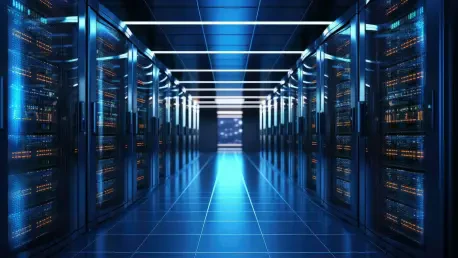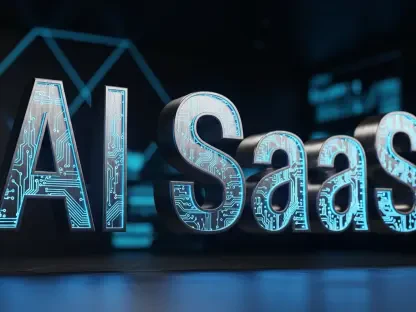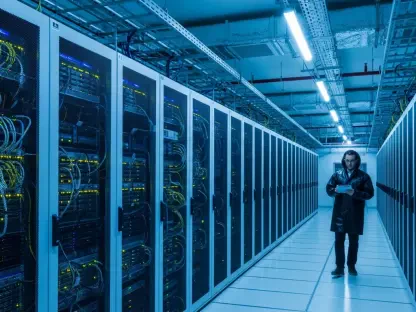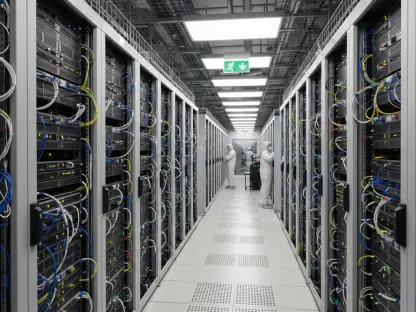Unpacking the Energy Challenge in AI’s Rapid Expansion
The artificial intelligence (AI) sector is at a critical juncture, with power consumption emerging as a formidable barrier to its unprecedented growth, and as tech giants race to deploy increasingly complex AI models, a staggering reality looms: the energy required to fuel these innovations is outstripping available infrastructure. Reports indicate that data centers supporting AI workloads are driving a significant surge in U.S. electricity demand, a trend that has intensified over recent years. This market analysis explores the intersection of AI’s voracious energy needs and the constrained power landscape, dissecting current trends, infrastructure bottlenecks, and future projections. By delving into the strategies of industry leaders and the evolving energy mix, this examination aims to provide actionable insights for stakeholders navigating this high-stakes challenge. The importance of addressing this issue cannot be overstated, as energy availability is poised to dictate the pace and scale of AI’s transformative potential across global markets.
Market Trends and Data Driving AI’s Power Dilemma
Surging Electricity Demand: A New Market Reality
The tech industry, once focused on rapid advancements in silicon and software, now faces an energy-driven paradigm shift. Data centers, critical to AI’s computational backbone, have become power-hungry giants, contributing to a notable uptick in U.S. electricity consumption. Unlike the stagnant demand seen in prior decades, the current market reflects a sharp increase, with AI workloads identified as a primary catalyst. This trend underscores a growing mismatch between the speed of technological innovation and the slower pace of energy infrastructure development. For companies scaling AI operations, this surge translates into billions of dollars in hardware investments sitting idle, unable to be activated due to insufficient power contracts and facilities. The market must adapt to this new reality, where energy, not just computing capacity, defines competitive advantage.
Infrastructure Bottlenecks: Stalled Growth Amid Power Shortages
A deeper dive into market dynamics reveals a critical bottleneck: infrastructure readiness. Many tech firms possess an abundance of GPUs and cutting-edge hardware, yet lack the necessary “warm shells”—data centers equipped for immediate deployment—and the power agreements to support them. This imbalance is a pervasive issue across the sector, stalling growth and exposing vulnerabilities in supply chain planning. The time required to build power infrastructure, often spanning years, clashes with the months-long cycles of chip acquisition, creating a significant drag on market expansion. As a result, companies face delayed rollouts of AI solutions, impacting their ability to capture market share in a hyper-competitive landscape. This bottleneck signals a pressing need for strategic realignment toward energy-focused investments.
Unpredictable Energy Needs: A Forecasting Challenge
Another pivotal trend shaping the market is the unpredictability of AI’s future energy requirements. As models evolve in complexity and adoption accelerates across industries, the scale of power needed remains a moving target. Industry analysis suggests that current planning struggles with speculative growth curves, leaving firms at risk of either overcommitting to costly power contracts or underinvesting and hampering progress. This uncertainty complicates long-term strategies for data center expansion and energy procurement, with potential financial implications running into the billions. The market must contend with this forecasting challenge, balancing immediate operational needs against the unknown trajectory of AI’s energy appetite, which could redefine infrastructure investments in the coming years.
Projections and Strategic Shifts in AI’s Energy Landscape
Renewable Energy Adoption: A Near-Term Market Solution
Looking ahead, the market is witnessing a pronounced shift toward renewable energy as a viable response to AI’s power demands. Solar power, in particular, stands out for its cost-effectiveness, emissions-free operation, and alignment with tech’s rapid deployment cycles. Unlike fossil fuel options such as natural gas, which face delays in construction and equipment availability until later this decade, solar offers a modular and scalable solution that mirrors the innovation tempo of semiconductors. Market projections indicate that behind-the-meter arrangements, where electricity is directly supplied to data centers bypassing traditional grids, will gain traction. However, while renewables present a promising avenue, scalability and grid integration challenges persist, suggesting that they cannot fully address the sector’s immediate needs without complementary strategies.
Speculative Technologies: High-Risk, High-Reward Investments
Beyond near-term solutions, the market is also eyeing speculative energy technologies with transformative potential. Investments in nuclear fission, fusion, and solar heat storage are gaining attention as possible game-changers that could redefine power generation for AI applications. While these innovations remain unproven at scale and face significant regulatory and developmental hurdles, their success could disrupt existing energy contracts and reshape market dynamics. Projections suggest that over the next decade, from 2025 to 2035, such technologies might begin to influence strategic planning, though their current immaturity leaves companies reliant on more conventional approaches. This speculative landscape introduces both opportunity and risk, as firms must hedge bets without overexposing themselves financially.
Regulatory and Economic Factors: Shaping Market Outcomes
Market projections must also account for external forces such as regulatory frameworks and economic fluctuations. Delays in approving new power plants, coupled with varying energy costs across regions, create an uneven playing field for AI infrastructure development. Government policies promoting sustainability could accelerate renewable adoption, yet bureaucratic bottlenecks often slow progress, impacting timelines for data center readiness. Economically, fluctuating energy prices add another layer of complexity, influencing the cost-benefit analysis of power procurement strategies. As the market evolves, these factors will play a decisive role in determining which companies successfully navigate the power crunch and which falter under the weight of misaligned investments.
Reflections and Strategic Pathways Forward
Reflecting on the analysis, it becomes evident that the AI sector has reached a pivotal moment where energy constraints shape market trajectories in profound ways. The surge in electricity demand, coupled with infrastructure bottlenecks and unpredictable needs, underscores a critical vulnerability in the industry’s growth model. The shift toward renewables like solar, alongside speculative investments in advanced technologies, offers glimpses of potential solutions, though scalability and regulatory challenges remain persistent hurdles. Looking back, the tension between immediate operational demands and long-term sustainability goals has defined strategic decision-making for tech giants.
Moving forward, stakeholders are urged to prioritize energy as a core pillar of AI expansion, integrating power procurement into business models with the same urgency as hardware innovation. Collaborative partnerships with utilities and renewable providers emerge as a vital step, alongside advocacy for streamlined regulatory processes to expedite infrastructure projects. Additionally, diversifying energy sources through hybrid models promises to mitigate risks tied to forecasting errors. These actionable pathways aim to equip the market with resilience, ensuring that the transformative power of AI is not derailed by the very resource it depends on most.









